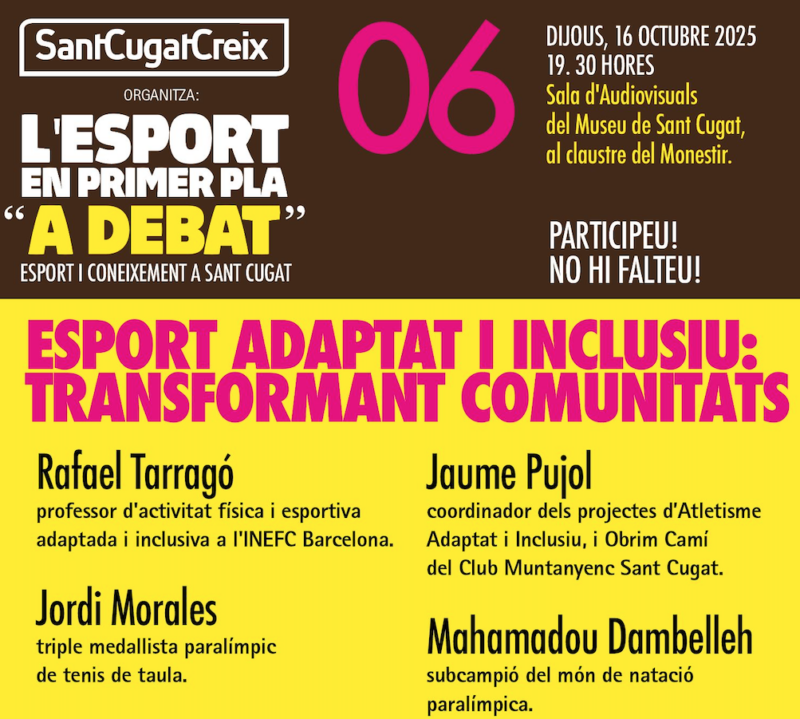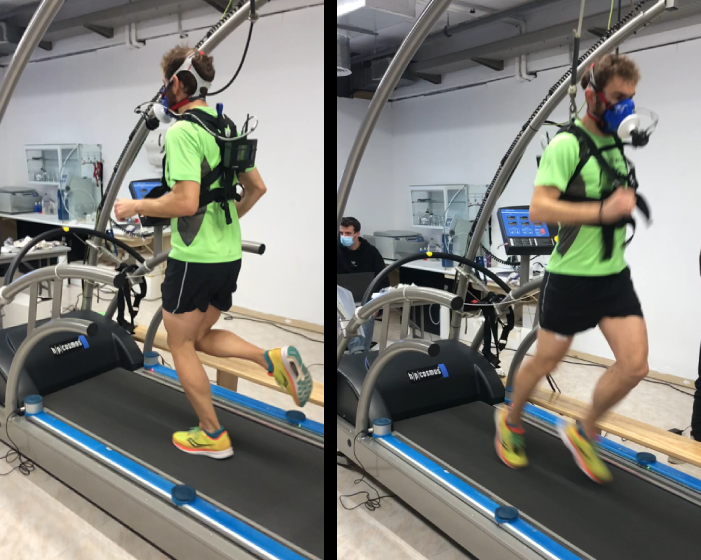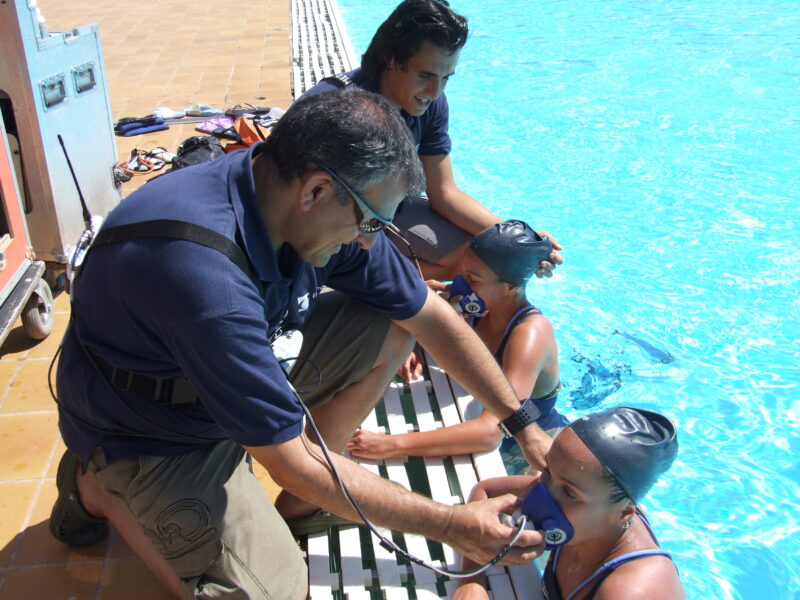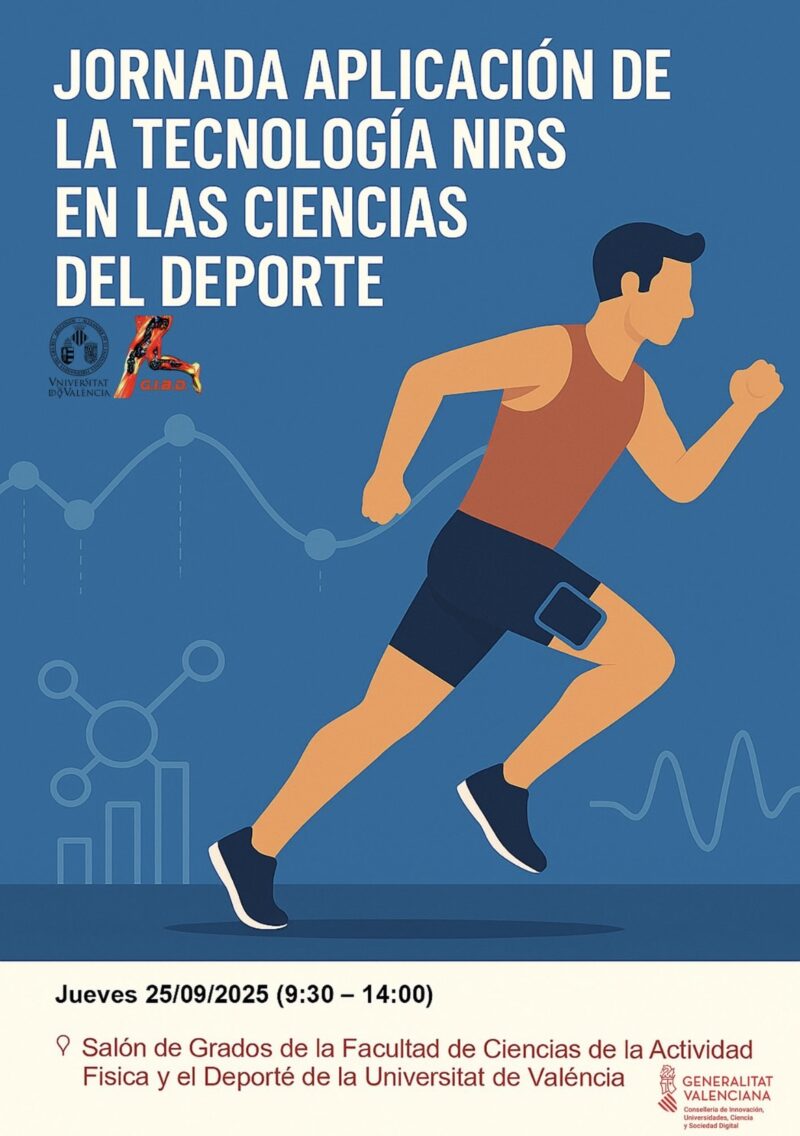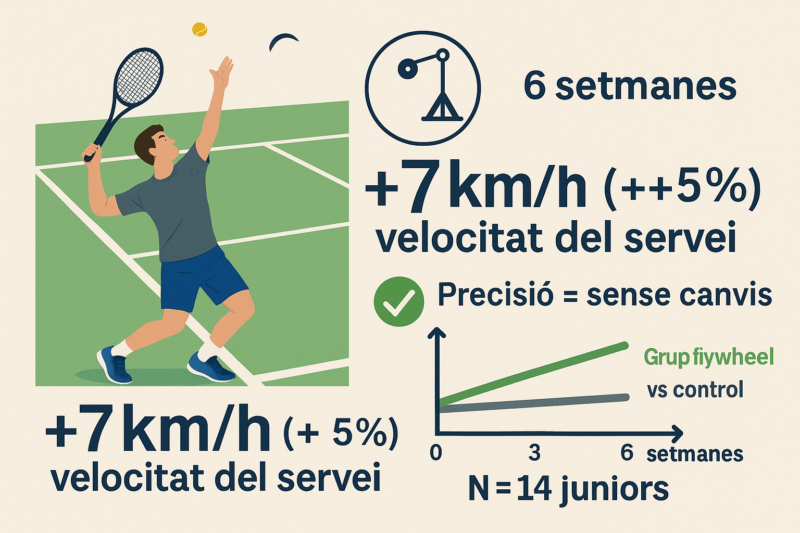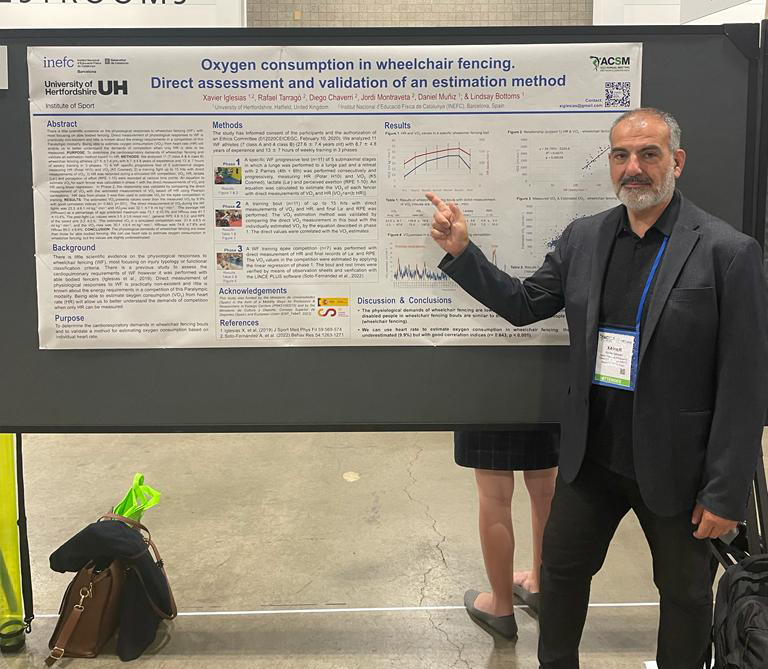
El professor Xavier Iglesias ha presentat a l’Annual Meeting 2023 de l’American College of Sports Medicine ACSM (Denver, USA) el treball: Oxygen consumption in wheelchair fencing. Direct assessment and validation of an estimation method.
Aquesta edició del congrés més important a nivel mundial en ciències de l’esport ha comptat amb més de 5000 persones registrades.
El treball presentat també compta amb els membres del nostre grup Rafael Tarragó, Diego Chaverri i Jordi Montraveta, així com dos col·laboradors de la University of Hertfordshire UK (Daniel Muñiz i Lindsay Bottoms).
Iglesias, X., Tarragó, R., Chaverri, D., Montraveta, J., Muniz-Pumares, D., & Bottoms, L. (2023). Oxygen Consumption In Wheelchair Fencing: Direct Assessment And Validation Of An Estimation Method: 576. Medicine & Science in Sports & Exercise, 55(9S), 188.
ABSTRACT:
There is little scientific evidence on the physiological responses to wheelchair fencing (WF), with most focusing on able bodied fencing. Direct measurement of physiological responses to WF is practically non-existent and little is known about the energy requirements in a competition of this Paralympic modality. Being able to estimate oxygen consumption (V̇O2) from heart rate (HR) will enable us to better understand the demands of competition when only HR is able to be measured. PURPOSE: To determine the cardiorespiratory demands of wheelchair fencing and validate an estimation method based on HR. METHODS: We analysed 11 (7 class A & 4 class B) WF athletes (27.6 ±7.4 yrs) with 8.7 ±4.8 years of experience and 13 ± 7 hours of weekly training in 3 phases: 1) A WF specific progressive test of 5 submaximal stages measuring HR (Polar H10) and V̇O2 (K5 Cosmed); 2) a training fight up to 15 hits with direct measurements of VO2; 3) HR was recorded during a simulated WF competition. V̇O2, HR, lactate (La–) and perception of effort (RPE 1-10) were recorded at various time points. An equation to estimate V̇O2 for each fencer was calculated in phase 1 with the direct measurements of V̇O2 and HR using linear regression. In Phase 2, this relationship was validated by comparing the direct measurement of V̇O2 with the estimated measurement of V̇O2 based off HR using Pearson correlations. HR data from phase 3 was then used to estimate V̇O2 for the épée competition in training. RESULTS: The estimated V̇O2 presents values lower than the real V̇O2 by 9.9% with good correlation indices (r= 0.843, p<.001). The direct measurement of V̇O2 during the WF fights was 23.3 ±6.1 ml·min-1·kg-1 and V̇O2max was 32.1 ±7.9 ml·min-1·kg-1. The average HR (HRmean) as a percentage of age predicted maximum was 72.7 ±10.3% and HRmax was 81.7 ±10.4%. The post-fight La– values were 3.5 ±3.6 mmol·min-1, general RPE 4.8 ±3.2, and RPE of the sword arm 3.3 ±2.5. The estimated V̇O2 in a simulated competition was 21.8 ±6.5ml.min-1.kg-1, and the VO2max was 30.1 ±8.4 ml.min-1.kg-1. HRmean was 74.6 ±7.8% and HRmax 89.0 ±8.6%. CONCLUSION: The physiological demands of wheelchair fencing are lower than those for able bodied fencing. We can use HR to estimate V̇O2 in wheelchair fencing, but the values are slightly underestimated. ACKNOWLEDGEMENTS: This study was funded by the Ministerio de Universidades (Spain) in the form of a Mobility Stays for Professors & Researchers in Foreign Centers (PRX21/00210) and by the Ministerio de Cultura y Deporte, Consejo Superior de Deportes (Spain) and European Union [EXP_74847; 2023]

